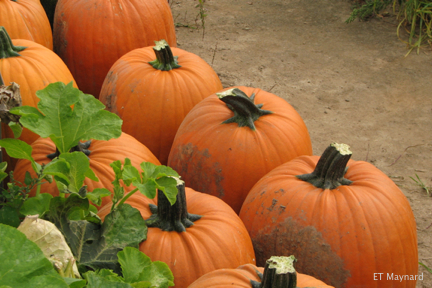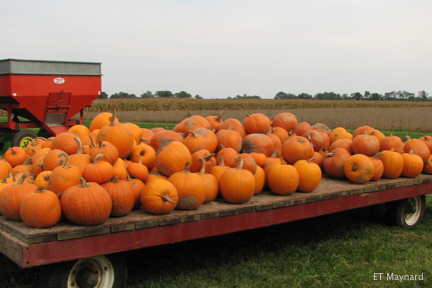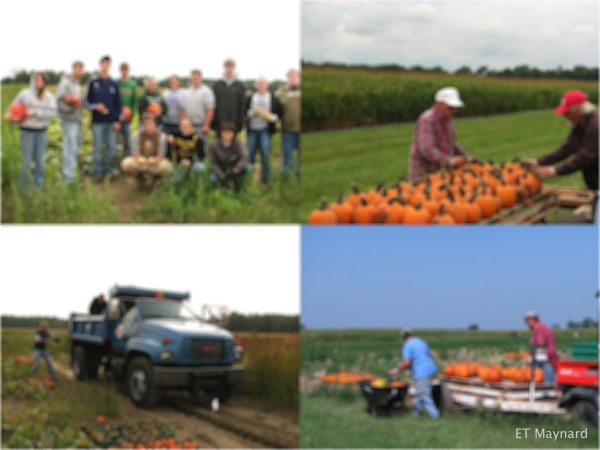Pumpkin season is here. Keeping up with best management practices through harvest and storage will help the year wrap up on a good note. The steps below are a reminder of actions that can make a difference.
- Handle fruit as little as possible.
- Harvest fully orange and healthy pumpkins. Half-orange pumpkins may turn orange but quality and storage life will be reduced.
- Use a sharp knife or loppers to cut pumpkins from the vine. Leave stems long enough for an attractive product.
- Carry the pumpkin like a ball, not by the stem, or ‘handle.’
- Brush off soil that sticks to the pumpkin.
- If pumpkins are washed, include a labeled sanitizer in the wash water and dry pumpkins before storage.
- Place pumpkins carefully in crates, bins, or trucks, so that the stem of one pumpkin doesn’t damage the rind of another.
- Watch for and avoid (or pad) sharp edges that could damage pumpkins rinds.
- Store pumpkins in a shaded location out of the rain if possible.
- Store pumpkins on pallets or other material to keep them off the ground or floor, if possible.
- Avoid stacking pumpkins to reduce damage to the fruit.
- Protect from frost and temperatures below 45°F by covering with tarp or moving to a protected area.
- Keep ideal storage conditions in mind and get as close as possible: 50-55°F and 50-70% relative humidity. Below 50°F chilling injury is possible.
- Keep away from sources of ethylene, such as apples, ripening tomatoes, and improperly operating heaters.
- Teach best practices to everyone who handles pumpkins on your farm.


